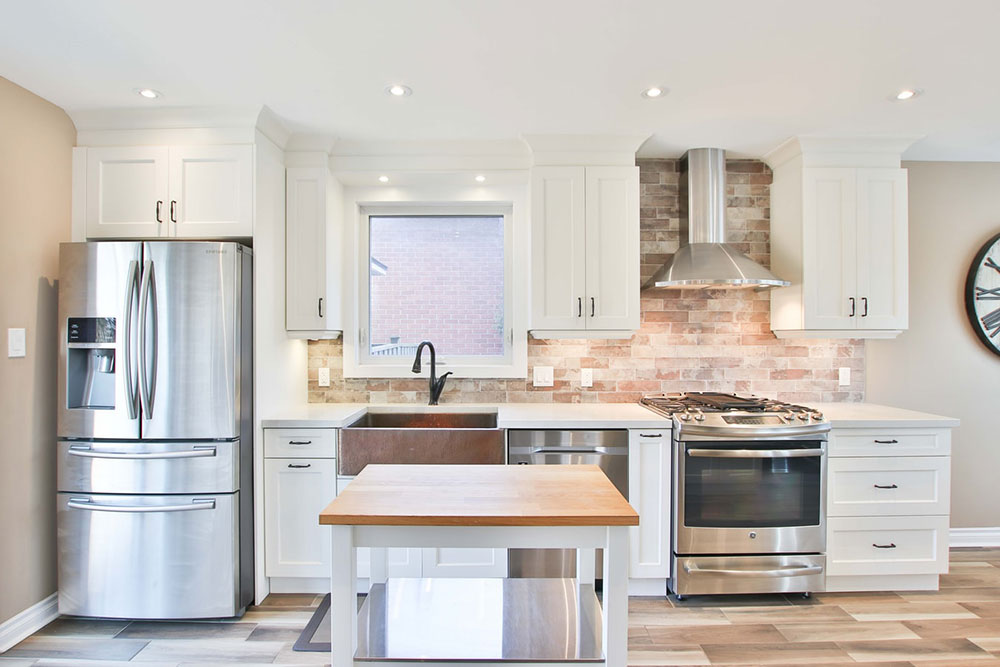Advertisement
Approximately 37 percent of Americans have lived in their homes for more than 10 years. In fact, according to The National Association of Realtors, the average homeownership duration was 13 years in 2018, with the average American expected to move 11.7 times in their lifetime. They also spend at least 10 weeks viewing homes, in a bid to find the perfect home – and a staggering amount of money on transforming their home into a better place for themselves and their family. The room that is often the center of these homes is the kitchen. With families spending a chunk of their day eating, cooking or conversing in their kitchens, it makes sense to invest in a kitchen design that will last and grow with your family throughout the ages. While changes in aesthetics may change over time, you can make a few basic kitchen design choices that will weather the years and potential changes in family dynamics.
Go For Storage But Make It Accessible
Did you know the average American spends 9 percent more on their kitchen renovations? One of the most cited reasons behind a kitchen renovation is to adapt the kitchens to a new family member or lifestyle. Whether you are trying to optimize a small kitchen or build a timeless kitchen, including ample storage is always a great suggestion. This means designing your countertop and kitchen cabinets to be a 34” height instead of the standard 36”. This saves you time and money as you grow older, and ensures that you can stay in the home you love for longer. A good idea for additional countertop space is to add pull-out extensions to your countertop. It expands countertops when needed, and is easily folded away to save space.
Keep Your Appliances Minimal, Color-Matched, And Integrated
In the National Realtor Association’s Remodeling Impact Report, kitchen upgrades ranked Number 2 on the list – ahead of a complete kitchen renovation. This is because homebuyers don’t just want a kitchen that is functional and stylish: they want appliances that are too. It’s important, therefore, to look beyond the kitchen design plans and think about the appliances you want to outfit your new kitchen with. For instance, when you are deciding on a cooler for your kitchen, don’t just think of the size to fit your kitchen specifications, but also how many people will be using it, and its safety rating. You should also take into consideration your appliance aesthetics, and whether it matches your kitchen’s color scheme. This helps to promote an even flow in the kitchen, and makes it appealing to the eye. Also, think of the pros and cons of integrated kitchen appliances. They are incredibly space-saving for small kitchens, and can help you to avoid serious accidents in the kitchen as you get older.
Consider Adding In A Kitchen Island If You Have Space
Adding a kitchen island can break up spaces in an open living floor plan, and introduce additional seating for your growing family when it is needed. The cost of adding a kitchen island can range from $350 to $20,000, depending on your design preference and the materials used. However, it can also boost your home value by thousands. Homeowners who add an island recoup approximately 73 percent of their investment. Another bonus: homeowners can remove the chairs around their kitchen island in the later years, to make it a perfect dining place for those in wheelchairs or with mobility aids.
It is often said that the kitchen is the heart of the home. If this is true, then homeowners should take their time in designing the perfect kitchen – one that will grow with them throughout the years. And while you may find yourself changing color schemes or aesthetics over the years, key design features like accessible storage and a great kitchen island can serve you well indefinitely – whether you are a young parent or seniors aging at home.

